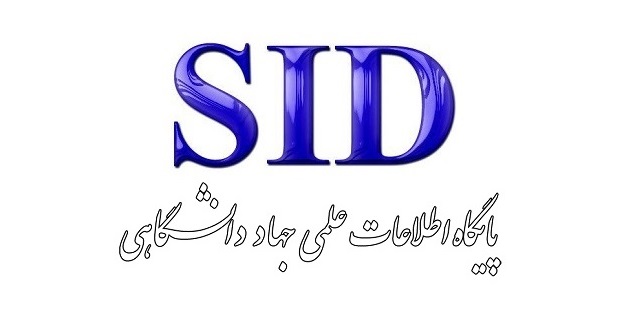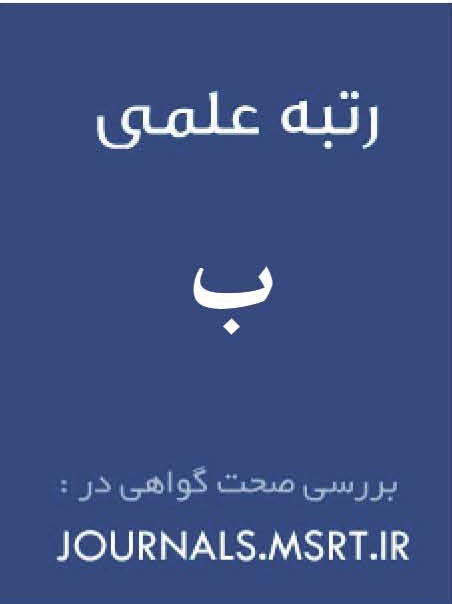بررسی عوامل موثر بر کاهش ارزش پول در كشور ایران
کلمات کلیدی:
کاهش ارزش پول, آزمون علیت, مدل تصحیح خطا, آزمون همجمعیچکیده
هدف این پژوهش بررسی عوامل مؤثر بر کاهش ارزش پول ملی در ایران طی دوره ۱۳۵۸ تا ۱۳۹۷ است. پژوهش حاضر با بهرهگیری از دادههای سری زمانی و روش همجمعی یوهانسون-جوسیلیوس انجام شده است. در این مطالعه، متغیرهایی شامل نرخ ارز، نقدینگی، کسری بودجه، سرمایهگذاری، درآمد نفتی و کسری ترازپرداختها به عنوان عوامل مؤثر بر ارزش پول ملی مدنظر قرار گرفتند. پس از آزمون پایایی دادهها، آزمون علیت تودا-یاماموتو و مدل تصحیح خطا برای بررسی روابط کوتاهمدت و بلندمدت بین متغیرها استفاده شد. نتایج نشان داد که نقدینگی، کسری بودجه و کسری ترازپرداختها اثر مثبت و معنیداری بر نرخ ارز (کاهش ارزش پول ملی) دارند، در حالی که سرمایهگذاری و درآمد نفتی اثر منفی و معنیداری دارند (یعنی باعث تقویت ارزش پول ملی میشوند). همچنین، سرعت تعدیل در مدل تصحیح خطا ۸۰ درصد برآورد شد؛ یعنی در هر دوره ۸۰ درصد از انحراف از تعادل بلندمدت اصلاح میشود. آزمون علیت تودا-یاماموتو نیز رابطه علی از متغیرهای مستقل به نرخ ارز را در سطح اطمینان ۹۵٪ تأیید کرد. مطالعه حاضر تأیید میکند که کاهش ارزش پول ملی در ایران نتیجه ترکیبی از عوامل اقتصادی درونزا مانند رشد نقدینگی، کسری بودجه و کاهش سرمایهگذاری است. در مقابل، افزایش درآمدهای نفتی میتواند نقش جبرانی برای حفظ ارزش پول ملی ایفا کند. در نتیجه، سیاستگذاران باید بهطور همزمان به کنترل نقدینگی، اصلاح ساختار بودجه و تقویت سرمایهگذاری داخلی و خارجی توجه داشته باشند.
دانلودها
مراجع
Akbarian, R., & Ali, G. (2011). Investment in economic infrastructure and its impact on economic growth. Economic Growth and Development Research, 1(3).
Allington, N. F., Kattuman, P. A., Waldmann, F. A., Allington, N. F., Kattuman, P., & Waldmann, F. A. (2005). One Market, One Money, One Price?-IJCB-December 2005. Third issue (December 2005) of the International Journal of Central Banking One market, one money, one price? Price dispersion in the European Union. International Journal of Central Banking. https://doi.org/10.2139/ssrn.633581
Brown, C., & Abraham, F. (2012). Sum of Perpetuities Method for Valuing Stock Prices. Journal of Economics (0361-6576), 38(1).
Campa, J. M., & Goldberg, L. S. (2005). Exchange rate pass-through into import prices. Review of Economics and Statistics, 87(4), 679-690. https://doi.org/10.1162/003465305775098189
Chen, N., & Juvenal, L. (2016). Quality, trade, and exchange rate pass-through. Journal of International Economics, 100, 61-80. https://doi.org/10.1016/j.jinteco.2016.02.003
Davoudi, P., & Sezavar, M. R. (2022). Investigating the Increase in Exchange Rate and Its Impact on Some Macroeconomic Variables of Iran under Sanctions. Economic Researches (Growth and Sustainable Development), 22(4), 99-117.
Eichengreen, B. (2010). Imbalances in the euro area.
Engler, P., Ganelli, M. G., Tervala, J., & Voigts, S. P. (2014). Fiscal devaluation in a monetary union.
Frankel, J., Parsley, D., & Wei, S. J. (2012). Slow pass-through around the world: a new import for developing countries? Open Economies Review, 23, 213-251. https://doi.org/10.1007/s11079-011-9210-8
Golshan, M. H., Mazini, A. H., & Najjarzadeh, R. (2022). The Impact of Exchange Rate Shocks on the Performance of Active Energy Companies in Tehran Stock Exchange: Case Study of Petrochemical and Oil Products Industries. Strategic Research in Budget and Finance, 1(3), 11-43.
Langot, F., Patureau, L., & Sopraseuth, T. (2012). Optimal fiscal devaluation.
McCarthy, J. (2007). Pass-through of exchange rates and import prices to domestic inflation in some industrialized economies. Eastern Economic Journal, 33(4), 511-537. https://doi.org/10.1057/eej.2007.38
Mousavi Jahromi, Y., & Ayat, Z. (2008). Examining the Effect of Government Budget Deficit on Private Sector Consumption and Investment in IranJO - Economic Research. 8(3).
Petroulakis, F. (2017). Internal devaluation in currency unions: the role of trade costs and taxes. https://doi.org/10.2139/ssrn.2968786
Rahmani, T., & Esfahani, P. (2016). Economic Research and Policies Journal. 24(78), 207-208.
Roshani, H. M. (2016). The Effect of Oil Revenues on Iran’s Liquidity: Emphasizing the Role of the Foreign Exchange Reserve Fund. Economic Growth and Development Research, 6(23).
Shakery, A. (2018). Macroeconomic Theory and Policies. Ney Publishing.
Tabianian, H. (2022). Investigating the Impact of Macroeconomic Variables Including: Exchange Rate, Interest Rate and Inflation Rate on Changes in Retained Earnings of Companies Listed in Tehran Stock Exchange Organization.
Tejesh, H. R. (2024). Impact of Inflation and Exchange Rate on Stock Market Returns in India: An ARDL Approach. Theoretical & Applied Economics, 31(2), 25-36. https://doi.org/10.2139/ssrn.4889476
دانلود
چاپ شده
ارسال
بازنگری
پذیرش
شماره
نوع مقاله
مجوز
حق نشر 1404 خالد مروانی فرد (نویسنده مسئول)

این پروژه تحت مجوز بین المللی Creative Commons Attribution-NonCommercial 4.0 می باشد.









